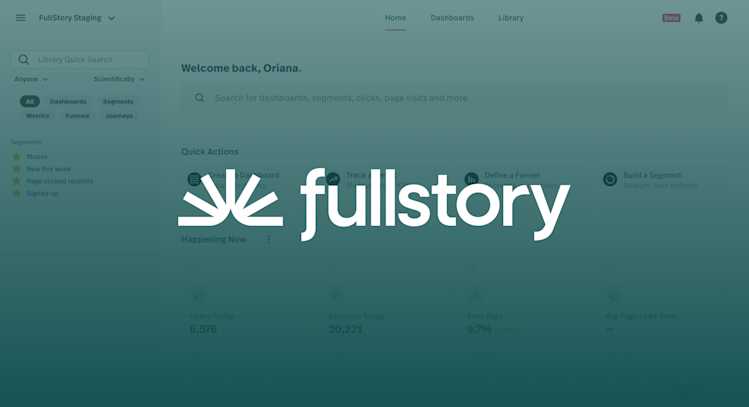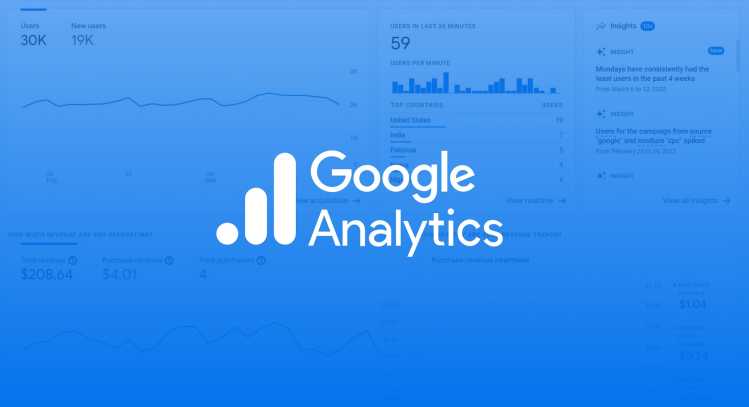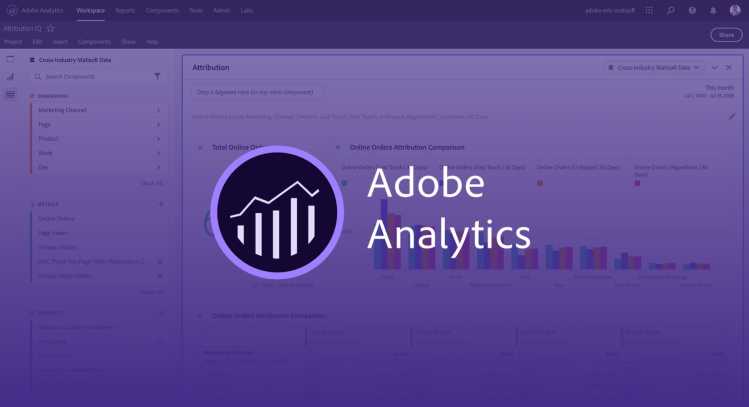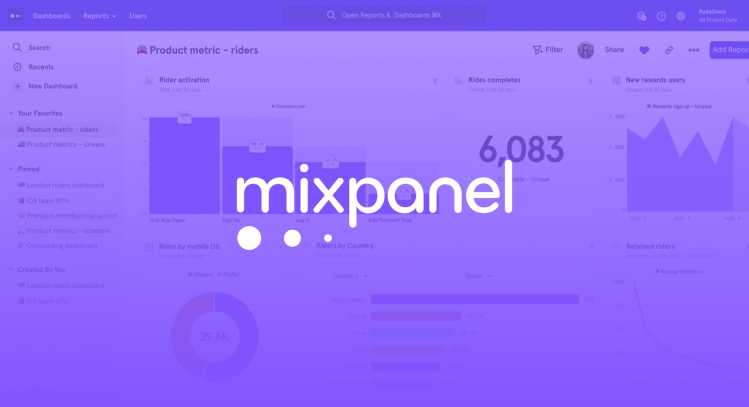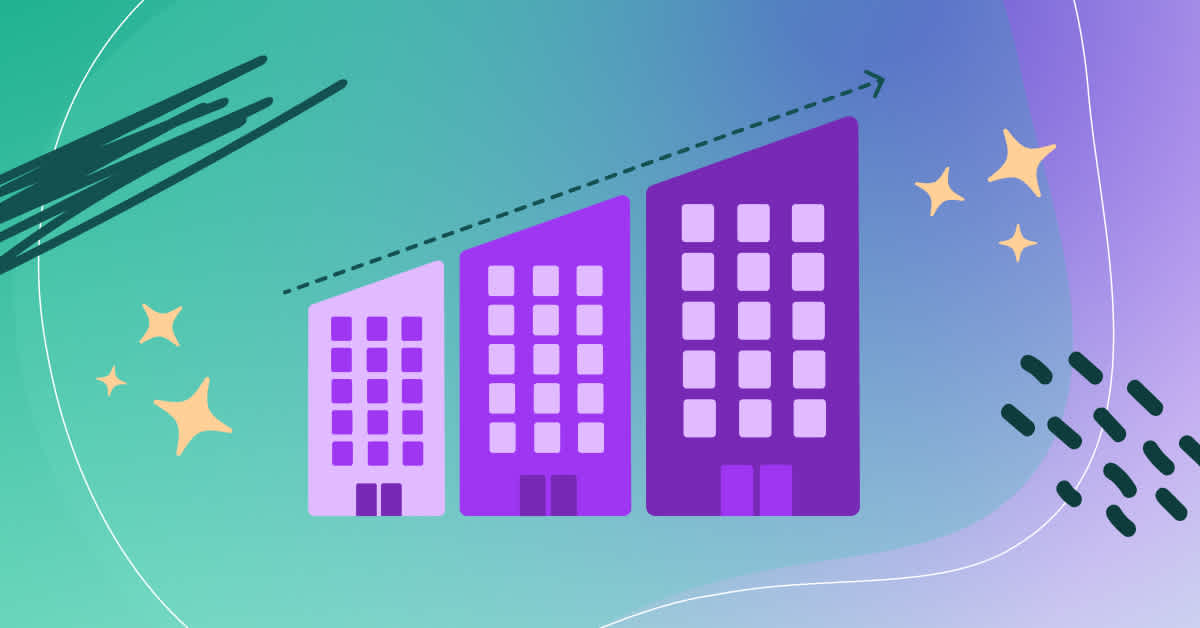Picking the right enterprise web analytics platform isn’t just about tracking clicks—it’s about unlocking the insights that drive growth, customer experience, and competitive advantage. With so many tools promising depth, scale, and AI-powered capabilities, the real challenge is knowing which ones truly deliver for enterprise teams.
In this guide, we break down today’s leading enterprise web analytics solutions, their strengths, trade-offs, and what sets them apart so you can make the smartest choice for your business.
What is enterprise web analytics?
Enterprise web analytics is a set of methodologies and technologies used to measure, collect, analyze, and present internet data. A proper analytics setup is essential for accurate measurement and reporting, ensuring that website data is collected and configured to provide detailed insights while maintaining privacy and flexibility. This data is used to understand and optimize web usage, providing insights into website visitors'’ behaviors and preferences.
Plus, web analytics provides quantifiable metrics of various aspects of website performance. Traffic metrics are a key category of website data tracked by enterprise web analytics tools, helping organizations monitor visitor numbers, engagement, conversions, and sources. These metrics include the number of visitors, pages viewed per visit, time spent on the site, bounce rates, conversion rates, and more. This data can be tracked in real time, offering valuable insights that help optimize a website's search engine visibility, improve user engagement, and ultimately meet business objectives.
Data collection is only the first step; data processing organizes, filters, and aggregates website data to prepare it for analysis and reporting, enabling meaningful insights into user behavior and website performance.
From an enterprise perspective, web analytics is not just a tool for measuring website traffic but a resource for business and market research—and a means to gauge website effectiveness.
The role of enterprise analytics
In the enterprise landscape, analytics goes beyond measuring website metrics. It's a robust mechanism for capturing, interpreting, and utilizing data across various business functions. This broader scope is commonly referred to as enterprise analytics.
Enterprise analytics is critical because it supports:
Informed decision-making and strategic planning
It helps drive business growth and competitive advantage
It allows you to centralize data from all your data sources, providing a unified view of the business and supporting strategic decision-making across multiple departments
This process allows companies to pinpoint trends, uncover insights, predict future scenarios, and optimize operations.
One of the primary roles of enterprise analytics is to enhance customer understanding.
By monitoring and analyzing customer behavior data, businesses can identify customer needs, preferences, and pain points, leading to more personalized service or product offerings.
Additionally, enterprise analytics can help in detecting and mitigating risks. With the help of predictive analytics and machine learning capabilities, businesses can forecast potential threats or downturns and devise proactive strategies to counteract these risks.
With the rise of big data and advanced analytics technologies, enterprise analytics is also playing a significant role in innovation. Enterprises can leverage the insights gained from analytics to develop new products or services, improve business models, and create new revenue streams. Data modeling helps enterprises structure and visualize all your data for real-time insights and advanced analytics.
At this point, high-scale enterprise analytics is a table stake for any successful business.
Business data and intelligence
Your business runs on data—user behavior, site performance, and marketing results. While standard analytics tools show you what’s happening on your site, the real advantage comes from understanding why.
Enterprise analytics platforms give you the complete picture by pulling data from every source. This lets you move past surface-level metrics to spot trends, analyze complex behavior, and anticipate what customers will do next.
But raw data is just noise. The key is turning numbers into insights your team can use. With clear data visualization, you can spot patterns, track what matters, and share findings instantly. When everyone is on the same page, you make better decisions together.
Handling data responsibly builds trust. The best platforms are built with strict privacy and security standards, protecting your customers' information and your competitive edge.
Ultimately, truly understanding your audience is what sharpens marketing strategies, improves website performance, and keeps you ahead of the competition. It’s simple: good data leads to good decisions.
How to choose an enterprise web analytics tool
Picking a new analytics tool can feel like you're just comparing feature lists. But let's be honest—you're not just buying a tool. You're choosing a partner to help you understand your customers and build better digital experiences. The right platform does more than just show you charts and numbers; it helps you discover the hidden patterns in user behavior that lead to real breakthroughs.
So, how do you move past the buzzwords and find a solution that will actually help your teams?
Here’s what truly matters.
Can you get a complete and truthful picture of your data?
Your analytics platform should be your source of truth for what’s happening across your digital properties. This means it needs to do more than just scratch the surface with metrics like page views and bounce rates.
A great platform automatically captures all interactions, giving you a complete dataset to explore. It should bring together data from every touchpoint, so you can see the full story of your customers' experiences in one place, in real time. This is the foundation for uncovering actionable insights that drive smarter business decisions.
Does it help you understand the why behind user behavior?
Knowing what your users are doing is one thing. Knowing why is where the magic happens. Your analytics tool shouldn't just tell you that users are dropping off in your checkout funnel; it should show you exactly where and why they're getting stuck.
Look for a platform that moves beyond basic metrics to provide deep, qualitative insights into the user experience. This means being able to see how users navigate your site, what content they truly engage with, and where they show signs of frustration. Understanding this "digital body language" is the key to creating experiences your customers will love.
Will it grow and adapt with your business?
Every business is unique, and a one-size-fits-all analytics solution won't cut it. Your analytics partner should offer the flexibility to meet your specific needs today and the scalability to support you as your business evolves.
As you grow, your questions will become more complex. You need a tool that can grow with you, allowing you to dig deeper and answer the new, more challenging questions that will inevitably arise.
Does it connect with the tools you already use?
Your analytics platform shouldn't live on an island. To get a truly holistic view of your business, it needs to connect seamlessly with the other tools in your marketing and development stacks, like your CRM, A/B testing, and marketing automation platforms.
This integration breaks down data silos and ensures that every team—from product to marketing to engineering—is working from a single source of truth, fostering collaboration and more cohesive strategies.
Is it built on a foundation of trust and privacy?
In an era of growing data privacy concerns, respecting your users' privacy is non-negotiable.
The platform you choose must be committed to the highest standards of data privacy and compliance, with robust features to protect user information. This isn't just about avoiding fines; it's about building and maintaining trust with your customers.
Is there a team of experts to help you succeed?
Finally, consider the people behind the platform. A great analytics partner offers more than just a software license. They provide prompt, effective support and training to help you and your team get the most out of the tool.
Look for a partner who is invested in your success and will be there to help you overcome challenges and achieve your goals.
Choosing an analytics platform is a major decision, but by focusing on these core principles, you can find a partner that will empower your team to build better, more customer-centric digital experiences.
Best web analytics for enterprise products
Fullstory
Fullstory has proven itself to be a reliable enterprise analytics solution for businesses seeking to gain deep insights into user behavior on their websites and apps.
Fullstory's standout feature is its ability to autocapture every user interaction. Unlike other platforms that often just tell you "what" happened, Fullstory dives deeper, also uncovering the "why" behind issues and opportunities. This lets your team to understand key metrics and track them over time, helping you make informed decisions.
Key features of Fullstory:
Fullstory autocaptures every interaction, going beyond simply reporting "what" happened to uncover the "why" behind issues and opportunities. This helps your team understand key metrics and make informed decisions.
Fullstory is easy to implement, offering immediate access to insights without slowing down your site.
It prioritizes user privacy by masking text elements to protect their information.
Fullstory offers a comprehensive view of customer interactions, providing user insights to shape your product roadmap and unite teams around a single source of data.
It helps prioritize work effectively through features like funnel analysis, conversion opportunities, and diagnostic capabilities.
Fullstory seamlessly integrates with various tools and platforms, making it a valuable part of your digital ecosystem.
Fullstory is a comprehensive product analytics solution that empowers teams, optimizes work, and helps you build user-friendly products.
Google Analytics
Google Analytics is one of the most popular web analytics tools and an enterprise analytics platform widely used for tracking website traffic and user behavior.
Some organizations may prefer to store data on their own servers using certain web analytics tools, which allows for greater control over data privacy and compliance with strict data protection laws.
Pros of Google Analytics:
Widely used and popular for tracking website traffic and user behaviors
Offers real-time data tracking and custom reports
Advanced features like BigQuery Export enable in-depth data analysis.
Consultative services from dedicated experts are available.
Adobe Analytics is a tool that enables organizations to analyze data from various customer touchpoints and provides insights into customer behaviors on your website.
Advanced features like AI and segmentation in Adobe Analytics offer deeper insights into customer behavior, going beyond basic reporting.
Pros of Adobe Analytics:
Good for gaining insights into customer behaviors
Features like segmentation, time-series analysis, and machine learning
Allows businesses to uncover meaningful patterns and make data-driven decisions
Mixpanel
Mixpanel helps track user interactions on your website.
Pros of Mixpanel:
Friendly interface for tracking user interactions with your website
Focus on event-based analytics, allowing you to track and analyze individual steps
Provides insights into user behavior throughout their journey on your website
Amplitude
Amplitude is a product analytics tool known for its comprehensive insights into user behavior.
Pros of Amplitude:
Insights into user behavior for measuring user engagement and retention
Powerful analytics capabilities to drive growth
Analytics, user journey tracking, and segmentation
Other types of useful analytics tools
While web analytics tools provide valuable insights into your website’s performance and user behavior, several other types of analytics tools can also help you gain a comprehensive understanding of your online presence. Analytics tools can also help track and optimize marketing channels, allowing you to assess the effectiveness of different platforms and improve overall campaign performance.
Behavioral analytics tools
Behavioral analytics tools, like Fullstory, go even further beyond traditional metrics to uncover how users actually interact with your digital experience. Instead of focusing only on traffic volume or pageviews, these platforms capture user sessions, clicks, scrolls, rage clicks, and even hesitation.
This allows teams to diagnose friction points, understand what drives conversions (or drop-offs), and improve experiences with precision. Unlike basic analytics dashboards, behavioral analytics tools help teams visualize the user journey in real-time or retroactively, making it easier to resolve UX issues and prioritize impactful changes.
Pros of behavioral analytics tools:
Deliver a deeper understanding of how users navigate and interact with your product or site
Help pinpoint bugs, confusing UI elements, or underperforming features
Enable cross-functional teams (product, marketing, UX, dev) to collaborate with shared context
Accelerate iteration and experimentation by showing why users behave the way they do
These tools are essential for any organization serious about user experience—and for turning behavioral data into action.
SEO analytics tools
SEO analytics tools, such as Ahrefs, are critical components in businesses'’ digital marketing arsenals, specifically designed to support search engine optimization efforts. They help optimize websites for superior search engine performance and delve into the intricate world of SEO, providing vital insights into keyword rankings, backlinks, site structure, and even competitor strategies.
By closely monitoring competitors, you can uncover effective SEO practices and trends, positioning your website for improved search engine rankings. Ultimately, these tools play a crucial role in your digital strategy, supporting higher visibility, increased traffic, and potentially, improved conversions.
Social media analytics tools
Social media analytics tools such as Sprout Social and BuzzSumo allow businesses to track their social media performance. They offer insights into post engagement, audience demographics, optimal posting times, and competitor performance, facilitating the creation of effective social media strategies that enhance brand visibility and customer engagement.
A/B and multivariate testing tools
Multivariate and A/B testing tools, like industry front-runners Optimizely and AB Tasty, are essential for businesses aiming to deliver the most effective user experience. These tools facilitate experimentation with different versions of web pages or features, enabling businesses to discern which iteration performs best with their target audience.
These tools go even deeper by providing data-driven insights into user preferences and behaviors, painting a comprehensive picture of user interactions.
Pros of A/B testing tools:
Businesses can make informed decisions to optimize the user experience.
Aligning the user experience with expectations and needs leads to improved engagement.
It also reduces bounce rates and increases conversions.
These tools are essential for continuous improvement and staying competitive in the digital landscape.
Content analytics tools
Content analytics tools are crucial for measuring and understanding your content's impact. They track metrics like page views, dwell time, shares, and comments to gauge user engagement. This helps identify resonating content and guides your strategy. By analyzing trends and patterns in user interaction, these tools provide evidence-based insights to refine your content.
Whether it's blog posts, videos, or infographics, they give you the knowledge to meet audience expectations. The outcome is more engaging content, heightened user satisfaction, and a stronger brand image.
Getting your leaders on board
You know that the right analytics platform can be a game-changer. But to get it, you need to convince the people who hold the purse strings. Getting executive buy-in means showing each leader how a deeper understanding of your customers helps them win.Here’s how to frame the conversation for each key stakeholder:
For your CFO: Connect insights to ROI
Your CFO wants to see the bottom line. Connect the dots between behavioral data and financial results. Show how seeing the why behind user actions can directly impact revenue.
Highlight the financial wins: Explain how uncovering points of friction in your checkout funnel can reduce cart abandonment and increase conversion rates.
Talk efficiency: Demonstrate how a self-serve platform empowers teams to answer their own questions, reducing reliance on data science and engineering resources.
Prove the value: Use data visualizations to make the financial impact clear, turning abstract insights into tangible ROI.
For your CIO: Focus on efficiency and security
Your CIO cares about a secure, efficient, and integrated tech stack. Frame your pitch around how the right analytics platform makes the entire ecosystem stronger.
Emphasize better data governance: A single source of truth for behavioral data means more reliable and secure information across the board.
Showcase engineering efficiency: Explain how a codeless solution frees up developers from endless manual tracking and lets them focus on building better products.
Highlight seamless integration: Stress how the platform will connect with your existing systems (like your CRM and A/B testing tools), maximizing the value of your current tech investments.
For your CEO: Paint the strategic picture
Your CEO is focused on the big picture: market position, competitive advantage, and long-term growth. Show them how deep customer insights are the key to a winning strategy.
Connect data to strategy: Explain how understanding customer behavior allows you to build better products, create more effective marketing, and stay ahead of the competition.
Empower the team: Frame it as a tool that gives everyone—from product managers to marketers—the insights they need to make smarter, faster decisions.
Suggest a pilot project: Propose a small, focused project to demonstrate the platform’s value quickly. A quick win can build the momentum needed for a full investment and show how this technology will drive the business forward.
Frequently asked questions
Why is web analytics important?
Web analytics is essential as it provides insights into how visitors engage with your website. It helps track visitor behavior, identify popular content, understand user journeys, and evaluate marketing performance. These insights inform business decisions, improve user experience, enhance marketing strategies, and increase conversion rates. Without web analytics, businesses would rely on assumptions instead of data, potentially harming their success.
What is enterprise-wide analytics technology?
Enterprise-wide analytics technology refers to systems that collect, analyze, and present data from all departments of an organization. They offer a complete view of business operations and customer interactions, enabling data-driven decision-making. These systems incorporate different types of analytics to provide a holistic understanding of the business, leading to improved efficiency, customer understanding, and business growth.

